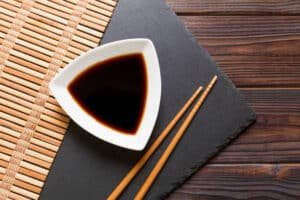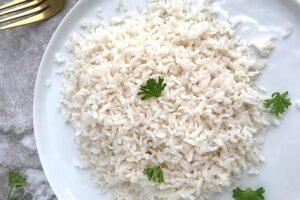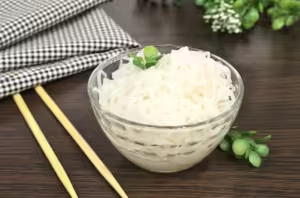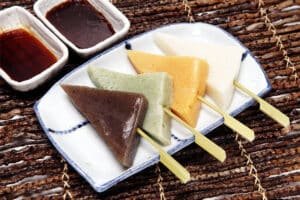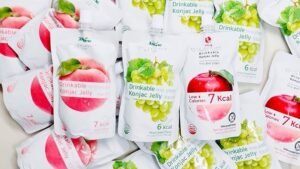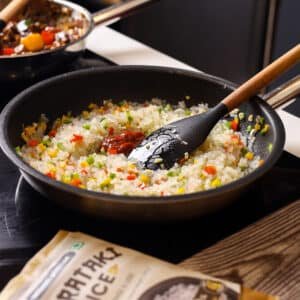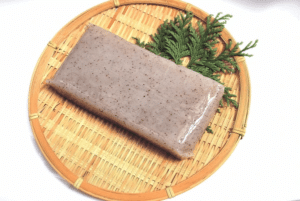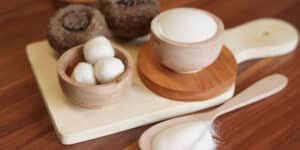
Konjac Japanese Food: A Journey of Flavor Exploration
- admin
- 1 3 月, 2024
- 5:10 上午
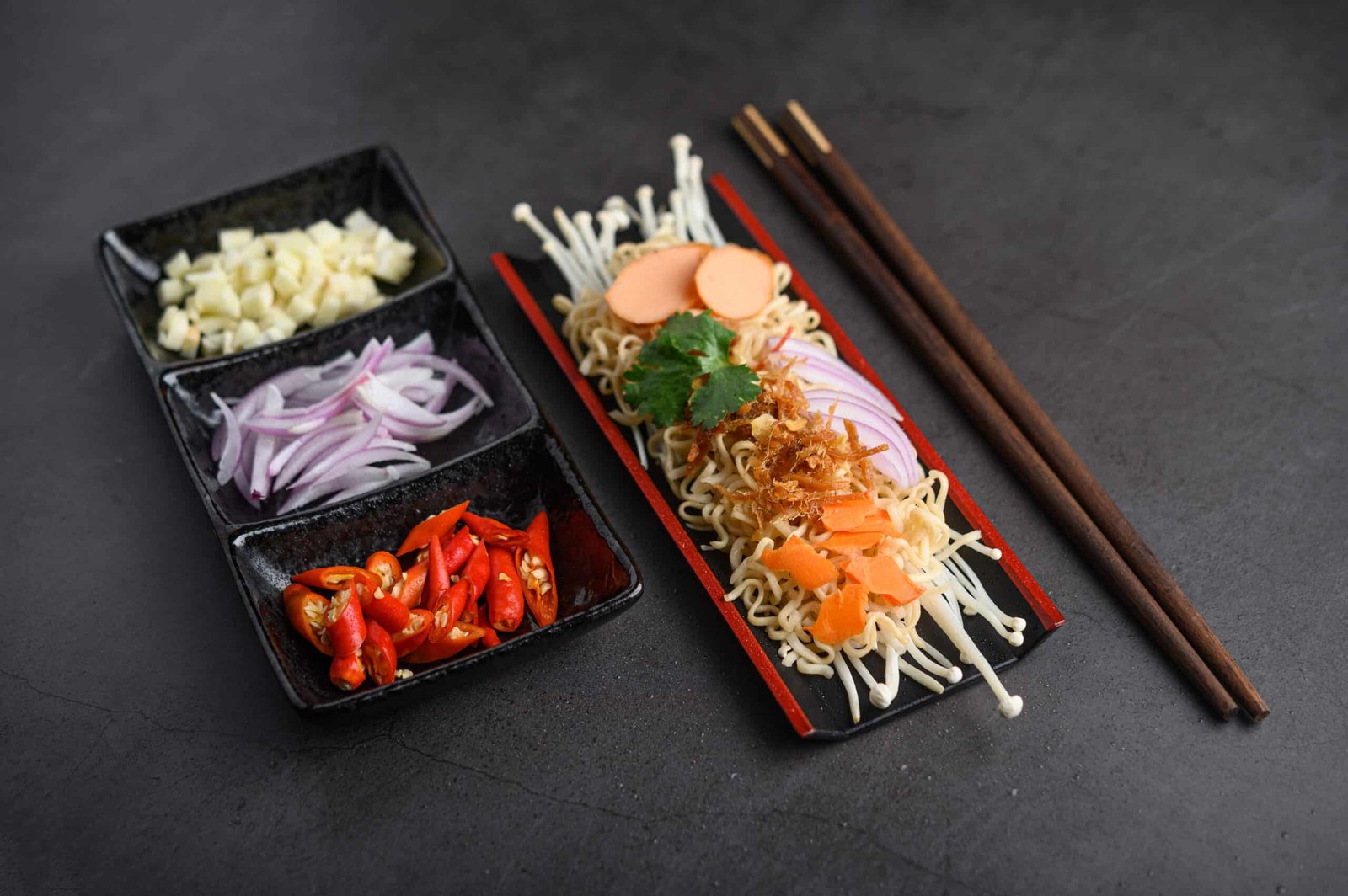
Table of Contents
Hey foodies! Join us on a tasty journey exploring konjac Japanese food. From its distinct flavor to amazing health perks, konjac offers a fascinating culinary adventure. Let’s dig in with chopsticks and discover the wonders of Konjac!
What is Konjac?
Konjac, scientifically known as Amorphophallus konjac, is a plant native to Asia, particularly Japan. This remarkable plant has been cultivated for centuries and holds a special place in Japanese cuisine. But what makes Konjac so intriguing? Well, here’s a mind-boggling fact for you: konjac is composed mainly of water and a unique dietary fiber called glucomannan. Hence, this combination gives konjac an extraordinary gel-like texture, making it a versatile and healthy ingredient in various dishes.
Konjac in Japanese cuisine
Throughout history, konjac has played a significant role in Japanese gastronomy. Traditionally, konjac was consumed during special occasions and celebrations, symbolizing prosperity and good fortune. Even today, it continues to hold cultural significance and is an essential ingredient in many traditional Japanese festivals. For them, konjac is more than just a vegetable; it’s a fundamental part of their culinary heritage. Renowned for its jelly-like consistency and subtle flavor, konjac is often used in a wide array of Japanese dishes. From noodles to desserts, konjac always adds a special touch.
Konjac as a Versatile Ingredient
Konjac’s versatility knows no bounds! Whether you’re looking for a healthy alternative to pasta or a guilt-free dessert, konjac Japanese food has got you covered.
Let’s start with konjac noodles, also known as shirataki noodles. These translucent and chewy noodles are made from konjac flour, giving them a springy texture. Unlike traditional wheat-based pasta, konjac noodles are incredibly low in calories and carbohydrates, making them an ideal choice for those watching their waistlines. So now you can satisfy your noodle cravings without the guilt!
One of the most popular konjac dishes in Japan is “konjac sashimi.” Yes, you heard that right – sashimi made from Konjac! Thinly sliced, marinated in soy sauce, and garnished with delicious toppings, konjac sashimi offers a unique and refreshing taste experience.
On the sweeter side of things, Konjac jelly steals the show. This delightful and wobbly treat is often enjoyed as a refreshing dessert in Japan. Therefore, with its various flavors like mango, strawberry, and green tea, konjac jelly is a guilt-free indulgence that will leave your taste buds dancing with joy.
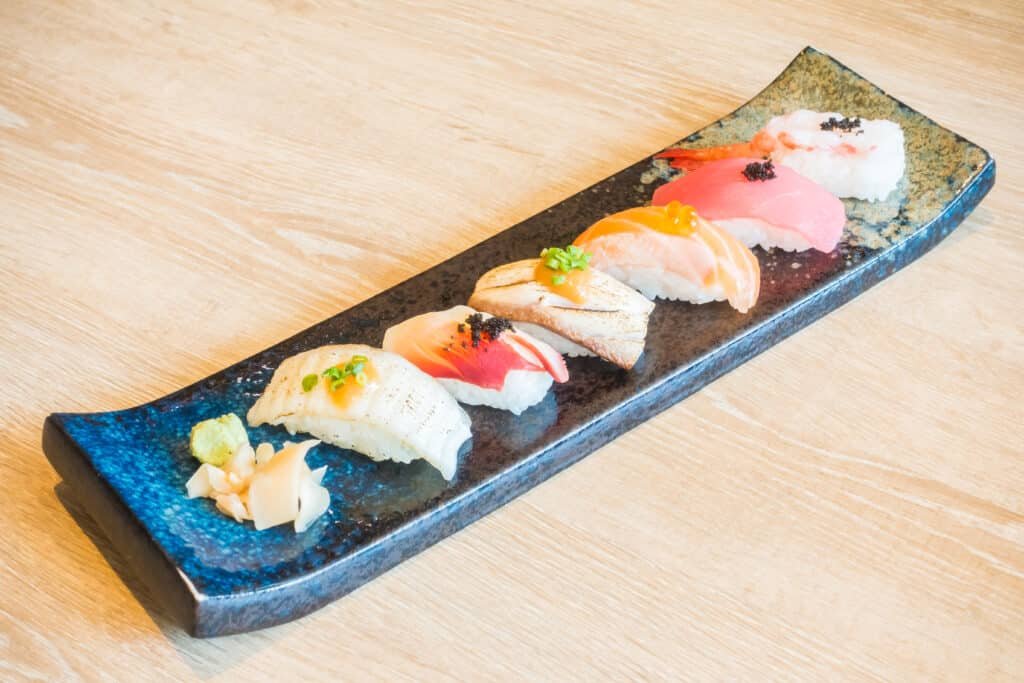
Konjac’s nutritional value
Apart from its culinary wonders, konjac Japanese food brings impressive health benefits to the table. Due to its high dietary fiber content and low-calorie nature, konjac has become a popular choice for those seeking a healthy lifestyle.
The dietary fiber, known as glucomannan, found in konjac has exceptional attributes. It expands in your stomach, making you feel fuller for longer periods. As a result, incorporating konjac into your diet can aid weight management and support a healthy digestive system.
Konjac is particularly beneficial for maintaining healthy blood sugar levels, making it a valuable addition to diabetic-friendly diets. Moreover, this fibrous wonder helps regulate cholesterol levels by reducing the absorption of dietary fat.
Konjac’s unique texture and flavor
One of Konjac’s distinctive features lies in its texture. Imagine a food that is not quite firm, yet not entirely soft. Konjac, with its delightful gelatinous texture, offers a chewiness that adds an element of surprise to every bite.
But what about the flavor? Konjac, on its own, has a rather neutral taste. However, this is precisely what makes it a culinary magician! It acts as a flavor sponge, absorbing the delicious tastes of the ingredients surrounding it. Hence, konjac develops an umami-rich taste profile when cooked with sauces, seasonings, and various accompaniments.
Traditional Konjac preparation
Ever wondered how Konjac makes its way from the plant to your plate? Konjac is harvested from the ground, thoroughly washed, and then milled into a fine powder. This konjac flour is then mixed with water and other ingredients to create various konjac-based products for cooking.
Traditional konjac dishes require a meticulous cooking process. After boiling, konjac is then sliced, shaped into noodles or jelly, and cooked with a range of flavorsome ingredients such as soy sauce, sesame oil, vegetables, or tofu. The result is a dish that embodies the essence of Japanese cuisine with its harmonious and balanced flavors.
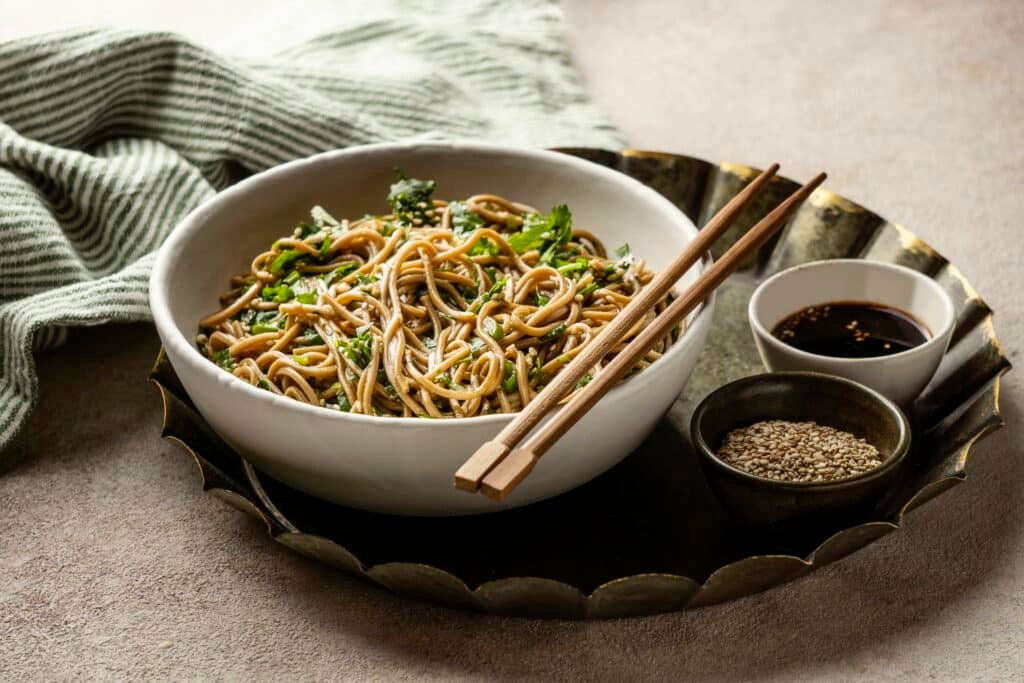
Konjac: A healthy choice
Whether you’re young or young at heart, konjac Japanese food is truly a food for everyone. It offers a myriad of health benefits that contribute to overall well-being.
For children, who are often picky eaters, konjac can be incorporated into their meals to enhance nutrition. Its low-calorie content and high fiber make it a helpful ingredient to keep your little ones satisfied while supporting their healthy growth.
For adults watching their weight, konjac can be a game-changer. Its combination of satiety and low-calorie content makes it an excellent choice for weight management. Therefore, you can enjoy a substantial meal without compromising your health and wellness goals.
Finding konjac Japanese food
Now that you’re tantalized by the wonders of Konjac, you might be wondering where you can find these delightful creations. Fear not, konjac Japanese food is becoming increasingly popular and accessible.
If you’re looking for Konjac products to experiment with in your own kitchen, many international grocery stores or online platforms offer a wide range of options. Look for konjac noodles, konjac jelly, or even konjac-based snacks to embark on your personal konjac culinary journey.
And if you’re not the chef type, Japanese restaurants are the perfect place to try out authentic Konjac creations. Many Japanese establishments feature konjac-rich dishes on their menus, allowing you to savor the true essence of konjac Japanese food.
The future of konjac Japanese food
The popularity of Konjac is expanding beyond Japan’s borders. With its unique culinary properties and impressive health benefits, konjac is making its mark in the global culinary scene.
This rise in popularity has sparked innovative uses of konjac in the food industry. From konjac-based vegan alternatives to creative konjac-infused recipes, the possibilities seem endless. Hence, Konjac is on the path to becoming a staple ingredient worldwide, captivating taste buds and inspiring culinary adventures.
So, whether you’re a food enthusiast or a health-conscious individual, explore the realm of konjac Japanese food and embrace its many wonders. Let Konjac take you on a journey filled with flavors, textures, and a newfound appreciation for the harmony of taste and well-being.
Conclusion
Congratulations! You’ve now completed your culinary expedition through the world of konjac Japanese food. We hope this flavorful journey has sparked your curiosity and awakened your taste buds to the wonders of Konjac. Remember, konjac is more than just a vegetable; it’s a gateway to a gastronomic experience that merges health, culture, and pure deliciousness. So go forth, explore, and savor every konjac-infused bite!

